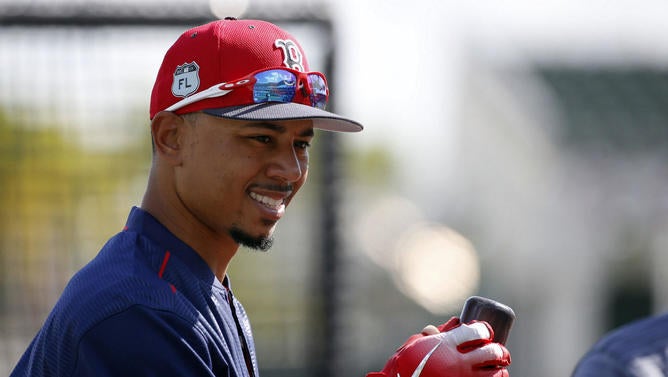Long before Moneyball came along, the game of baseball embraced numbers and statistical analysis. Every single team in baseball has a stats department. The ways and means have certainly changed, but the goal remains the same: use numbers to find a competitive advantage.
These days sophisticated tracking systems like PitchFX and Statcast record pretty much everything that happens on the field: how much a pitch moves, how quickly an outfielder takes his first step, how hard a catcher throws down to second base on a stolen base attempt. You name it, and there’s a number for it.
R.J. Anderson recently spoke to several folks within baseball to get an idea of how teams are acquiring and using their data in the post Moneyball era. There are, surprisingly, many outside vendors involved. This nugget from Anderson’s piece stood out to me:
“Right now, we have teams out there, who, when they evaluate a player, they’re taking their 2017 schedule, they are prototyping the opposing pitcher array -- perhaps, if they’re really sophisticated, even assuming what the seventh, eighth, and ninth innings look like against those teams -- and they’re simulating a batter’s performance, a prospective acquisition, his performance against that pitching opposition, in those ballparks,” Gennaro said. “Because they’re not looking at his stats, they’re looking at his exit velocity and his launch angle.
“If you hit the ball 86 mph to let’s call it straight-away right field at Yankee Stadium at a 32-degree launch angle, depending on the wind, that probably drops into the first couple of rows. If you hit that same velocity and launch angle at AT&T Park, Hunter Pence is taking two steps in to field it. So, all of those things are being incorporated into the analytics of the most sophisticated teams.”
That’s wild. Teams are essentially modeling an entire season using all the available data to get an idea how a player may perform for them. These are still human beings of course, so nothing is 100 percent predictive, but if you have the data available, why wouldn’t you use it to try to forecast performance?
The days of targeting players with high on-base percentages because the the rest of the league is undervaluing them are long, long gone. Now teams are using information in more complex ways to gain an advantage. One method is neuroscience, the science of brain function and reaction.

Baseball players are human beings. You can’t ignore the human element. Everyone’s brain works differently and it’s impossible to quantify that variable. That hasn’t stopped teams from trying though. A few teams started exploring neuroscience years ago, and more and more clubs have caught on since.
The Red Sox were among the first clubs to buy into neuroscience, back when Theo Epstein was running the show. As Brian Costa of the Wall Street Journal explained in 2014, the Red Sox partnered with a company called NeuroScouting that developed software to measure and improve a player’s reaction ability. From Costa:
Nonetheless, teams’ interest in the neuroscience of hitting is only growing. What began as a training tool for the Red Sox has also become a scouting device. Before each amateur draft, the Red Sox assess hitting prospects in part based on how well they score on the NeuroScouting games.
Mookie Betts, Boston’s fifth-round draft pick in 2011, recalled meeting with a Red Sox scout in an empty classroom one day during his lunch period at a Tennessee high school. At the scout’s request, he completed a series of games on a laptop. “I was thinking, ‘What does this have to do with baseball?’ ” Betts said. “I guess I did pretty well, since he kept on pursuing me.”
Betts, 21, said the daily NeuroScouting drills he did in the minors helped put him on a fast track to the majors. “It gets your brain going,” he said. In 43 games through Thursday, his .363 on-base percentage ranked second among major-league rookies behind Chicago White Sox star Jose Abreu.
Teams are, quite literally, attempting to measure how quickly a player’s brain reads a situation and reacts with a decision. Grading out well in “neuroscouting” doesn’t guarantee success, the same way having a pretty swing or a 95 mph fastball doesn’t guarantee success. It’s one tool in the shed, and the more tools available to you, the more likely you are to get the job done successfully.


















